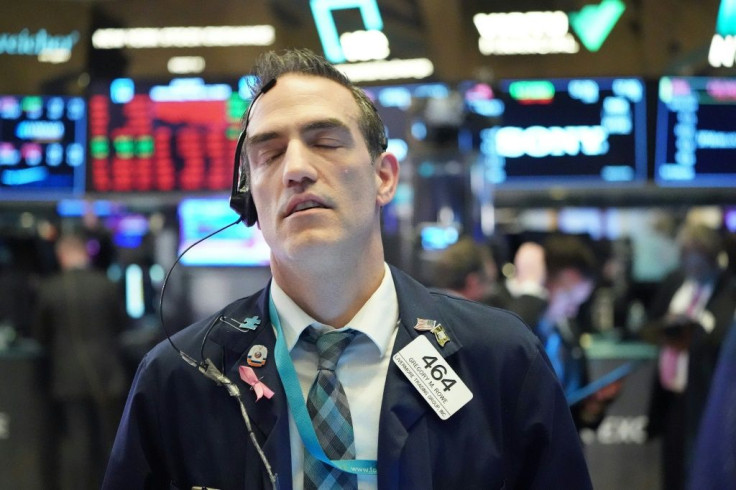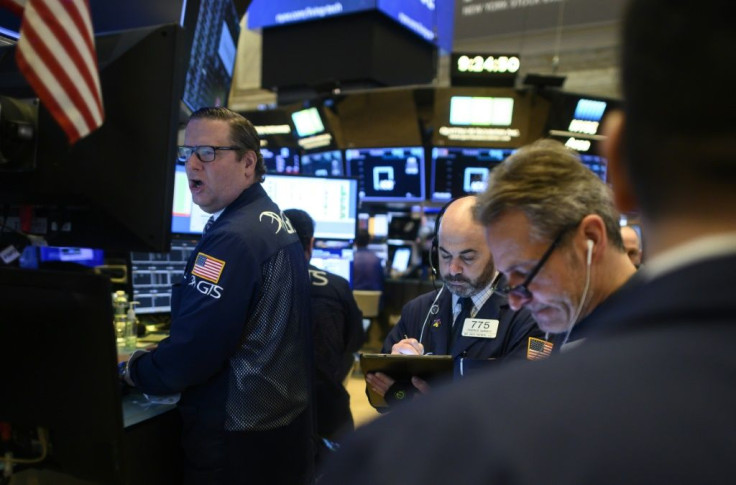Stock Market Futures Plunge 1,000 Points, Trigger 'Limit Down' Levels

KEY POINTS
- Overnight futures for the S&P 500 and the Dow plunged in brutal trading Sunday
- Contracts on the S&P 500 nosedived 5%
- Dow futures plunged more than 1,000 points
Wall Street is set for another mammoth and bloody selloff Monday, unimpressed by the announcement from the U.S. Federal Reserve and President Donald Trump of a huge interest rate cut that will drop the federal funds rate close to 0%.
The rout in futures Sunday wiped-out most of the gains in the historic rally last Friday that saw all three major indices up more than 9%. On Friday, the Dow closed 1,985 points higher, or 9.4%, at 23,185.62. The benchmark S&P 500 jumped 9.2% to 2,711.02, while the Nasdaq Composite surged 9.3% to 7,874.23. The indices Friday posted their biggest one-day gain since October 2008.
All of this was erased Sunday by the historic plunge in futures. Overnight futures for the S&P 500 and the Dow Jones Industrial Average plunged in brutal trading that leaves little doubt Wall Street faces a four-digit crash Monday.
Contracts on the S&P 500 nosedived 5%, rapidly reaching the “limit down” set by the CME futures exchange to prevent huge losses. The limit means no trades can be done below this threshold.
Dow Jones Industrial Average futures fared little better, plunging more than 1,000 points. This rapid plunge also triggered the limit-down level. The halt occurred during non-U.S. trading hours, or before the 9:30 a.m. ET open of regular trading Monday.
Analysts pointed out the limit down rule has been activated multiple times over the past few weeks as investors fled equities over fears the Trump administration is losing the fight against the COVID-19 outbreak. The raging pandemic is fast fueling fears of a global recession while massively disrupting global supply chains and slashing consumer spending to unprecedented levels. Both the Dow and S&P 500 last week tumbled into a bear market, where their values were more than 20% lower from their recent high attained only in February.
Analysts warn if the anticipated massive selloff accelerates Monday during regular trading hours, the circuit breakers will kick in once again to temporarily suspend trading.
The New York Stock Exchange explained a market trading halt will occur at “three circuit breaker thresholds” on the S&P 500. These halts are meant to prevent large declines and high volatility.
The drastic rate cut announced by the Fed on Sunday pleased Trump no end but served to confirm to investors their lingering fears that the COVID-19 pandemic is spinning out of control in the U.S.
The emergency measures slashed the benchmark borrowing rate to a range of 0% to 0.25%, its level during the 2008 global financial crisis -- and the symbolism wasn't lost on investors. The Fed vowed to keep the rate at this low level "until it is confident that the economy has weathered recent events."
It also announced massive asset purchases, opened its discount-lending windows to banks, thereby making it easier for banks to borrow from the Fed. The Fed urged banks to use the extra cash to help businesses and households, which is something they were supposed to do -- but never did -- during the Great Recession of 2008.
Despite the Fed's panicked rate cut, and similar cuts by other central banks, Fed chairman Jerome Powell admitted "the second quarter will be a weak quarter with probably output declining a bit."
But "after that it becomes hard to say," and "it's going to depend again on the path of the virus."

© Copyright IBTimes 2025. All rights reserved.





















